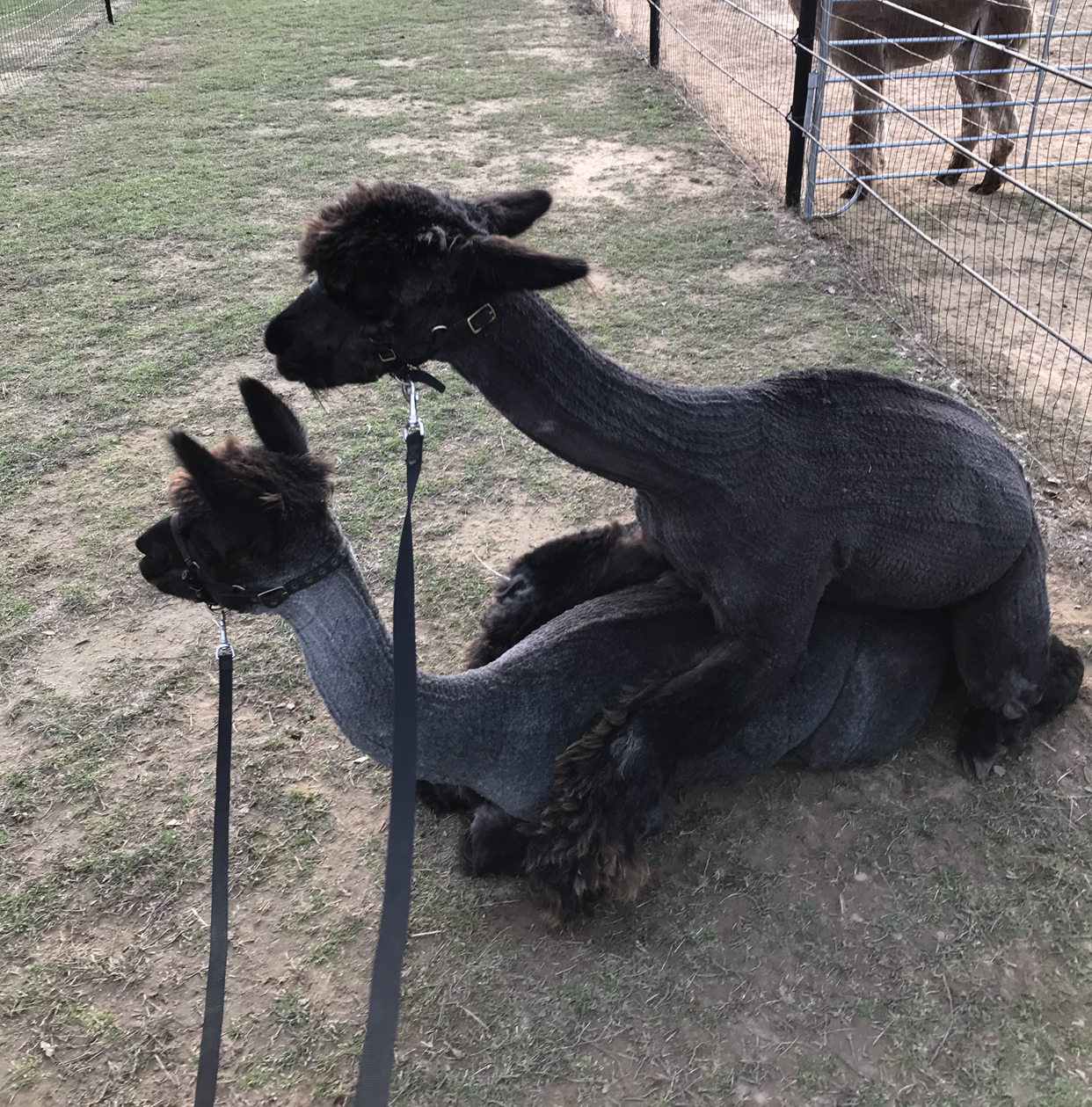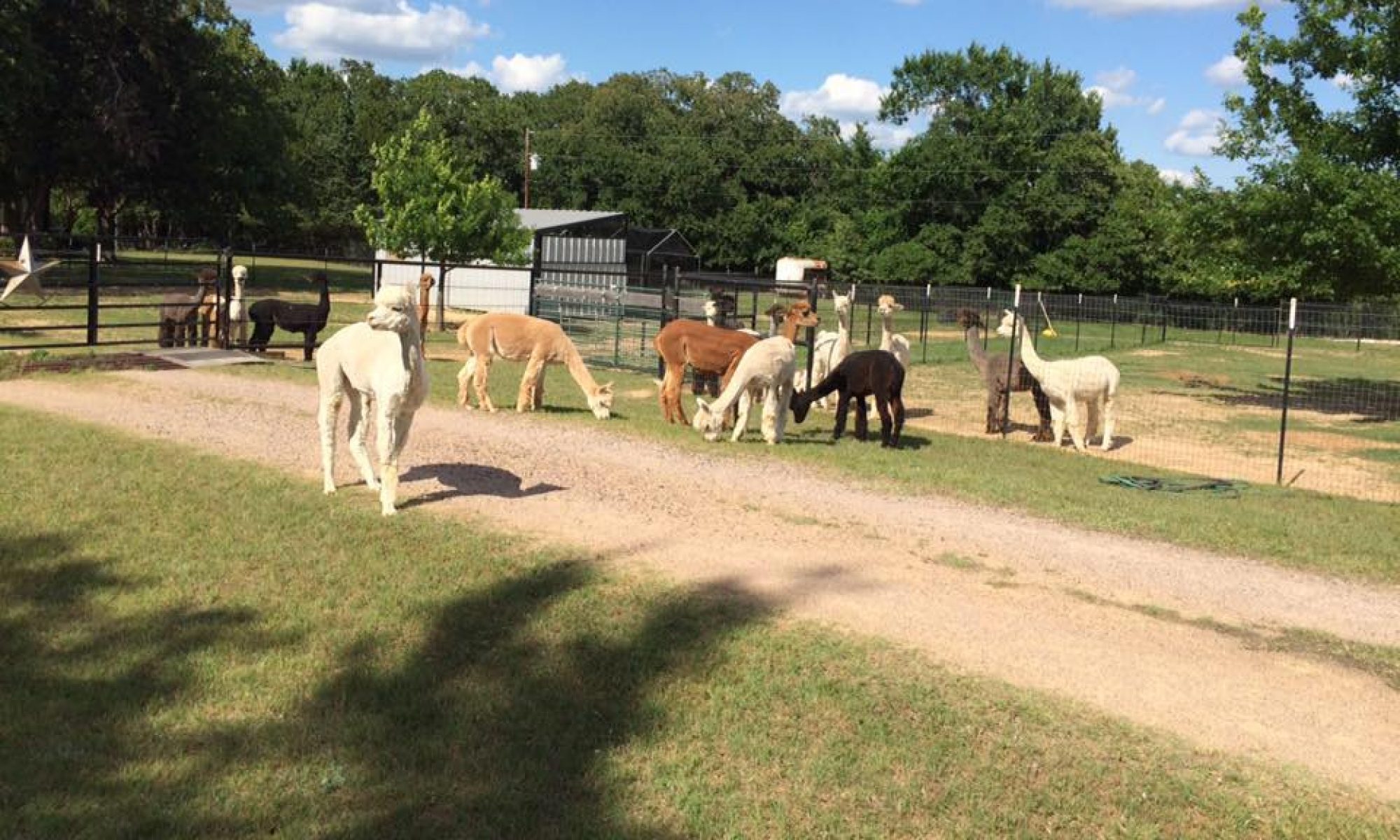
Modern Grey to Modern Grey ©️ Charles Ashley 2018
“What are you breeding for?”
We often got this question early on As we moved into breeding Alpacas. It was a confusing question to us. Besides the obvious answer of a better alpaca than what we have, there are many considerations. A lot of people want to breed for a specific color. Others are interested in fineness. Others are concerned about bloodlines.
We have come to the understanding, at least in our minds, that there is no right or wrong answer. At our ranch we have fallen in love with what we like to call the Holy Grail of Alpacas: the Modern Grey. We have a stated breeding goal on our website. But we will hopefully always get an improvement over the dam or sire.
Breeding for a specific color is a challenge. Without going deeply into an area that is beyond our educational expertise , just know that white is a dominant gene. And with 16 AOA colors, along with two indefinite classes and 4 mixed color or patterned classes, know that nothing is guaranteed. We have witnessed a black cria out of a white dam and sire, and a pure white cria out of two dark fawn parents.
We’ve heard it expressed that 20% of your breedings will result in a better Alpaca, that 60% will result in an average Alpaca, and that 20% will end up as a disappointment. Sometimes it feels as if those numbers are a 10-20-70 ratio. And while this information has not been run by any Alpaca geneticist, don’t give up on your dream.
General Tips
Keep a written record of your breedings. We’ve seen it on marker boards at other ranches. We use a written form. It’s sharable if you want it.
Time breedings so that 30-60 days of reasonable temps are before and after the expected delivery dates. This translates into a fairly narrow seasonal window for breeders in our area—about 2 months in the spring and fall.
Spring babies tend to be stronger and have less problems, at least that is what we have been told by an experienced veterinarian.
How to Breed
While female Alpacas are induced ovulators—the act of breeding causes them to ovulate—they do have a follicular cycle that causes them to produce a follicle (egg). Females are receptive mating when a follicle is ripe and ready for fertilization. This cycle varies from Alpaca to Alpaca. Some are as short as 7 days (est.); others are up to 19 days (est.) We have taken a class on this but need to take one again. We would recommend the same for you.
A female in the receptive state will cush usually within 60 seconds, if not immediately for a male. A female that does not have a ripe follicle will walk or run away, or spit at the male. This is called “spitting off.” Important: wear something that you can wash as you may get spit on. See below about Unsuccessful Breeding Experiences. The picture of my green arm near the end of this article is from a failed breeding attempt.
Types of Breeding
Practically speaking there are two, no three ways of breeding Alpacas:
- Haltered Breeding
- Pasture Breeding
- Oops Breeding
Haltered Breeding
This is our method here at Aubrey Oaks Alpacas. We isolate the female and male herds away from the action. Next we bring a male and female together in a pen neither is used to being in. If the male begins sniffing and starts his orgle and the female drops for the male to mount and a breeding lasts for 10-30 minutes we are happy campers.
The pair is so involved at this point that you can drop the leads. But don’t go too far…
You will want to manually (with your hand and fingers) and visually (on your knees and perhaps with a flashlight) inspect that the male’s penis is inserted into the females vagina. Inexperienced herdsires have been known to mistakenly connect with the anus. If you are doing this by touch, the anus is above the vagina. An outstretched finger below the connection should not feel another hole. In most instances the male will not pay any attention to you unless you stay down there too long.
Most dams will stay cushed sternal during breeding. Some will turn on their side. While it makes it more difficult for the male to do his duty, it is still possible to get a successful breeding in this way. If you have a female that consistently turns on its side and frustrates the male, Consider using a couple of bales of hay on either side of them to help keep her upright.
After the breeding we examine the female’s back side to be sure the right hole has moisture. Just to be sure.
Pasture Breeding
Larger breeders many times like to employ pasture breeding. Putting a single male into a pen with 10 to 20 or more females is the plan. Leaving them together for a month is what we have been told happens.
Generally speaking if this method is adopted it is important to have enough females in the pen so that the male does not drive the inseminated females bonkers.
The vet is then consulted at about 3 months to do sonograms. This should confirm who is pregnant out of that pen.
Oops Breeding
Leaving a gate unlatched between males and females is the best way for this type of breeding Alpacas. Obviously we are stating this method in jest. It has severe negative issues especially if you have sons breeding moms and sisters. Using Estrumate to make the females cycle and abort their fertilized eggs is the only sure solution to this problem. But that may be a difficult and expensive solution for you. So please, always double latch those gates! If you have contractors on your property doing work a serious emphasis for pen security should be a requirement.
Another Oops Breeding takes place when you leave a male cria with their dam past 8 months. Be sure to start weaning your males from their dams no later than 8 months, preferably earlier.
Unsuccessful Breeding Experiences
If you have an open dam that is non-receptive expose her again to the male every two days over the course of 12-14 days. What you are trying to do is match her cycle up to her receptivity.
If she still will not cush there are several options. Check with your vet about the possibility of a retained corpus luteum; a retained CL can cause a female to act a strong if she is pregnant but not be truly pregnant. She has a reproductive system that is basically stuck in a faux-pregnant situation. Some vets may prescribe Estrumate (a synthetic prostaglandin-type substance that acts as a hormone) to make the female cycle. One of our vets also prescribes concurrent antibiotics to address any potential uterine infections (see below.)
A word of caution here. If Estrumate is given to a pregnant Dam it will cause her to deliver. So be really sure that your dam is open. Trans abdominal or even rectal sonograms of pregnant dams especially later into the pregnancy have shown to be an unsuccessful method of determining pregnancy.
If you still have issues, a rectal sonogram is a good place to start. Best results are usually obtain at the 2-3 month mark of pregnancy. If you don’t have a vet with the equipment and experience nearby search out a good state veterinary school and load her up for better help. (See https://www.academia.edu/9762637/RUMINANT_and_CAMELID_REPRODUCTIVE_ULTRASONOGRAPHY_1st_Edition_2010-BLACKWELL_PUBLISHING , pages 211-223 to better understand ultrasonic sonography in camelids.
The vet or school may prescribe an antibiotic like Excede for an infection, or a uterine lavage. Some conditions like an ovarian cyst may result in the removal of your dam from your breeding program.
Spit Testing
A spit test is a good and well accepted response test to determine if your bred female is indeed pregnant. When breeding spit test every 7 days after a successful breeding. Rebreed as necessary up to 3-4 weeks.
We have both the dam and the male on a lead when performing the test. If the dam cushes her reproductive system is most likely saying the prior successful breeding did not result in a successful egg insemination and implantation on the wall of the uterus. If she reacts negatively and vigorously to the male’s attention she is saying that she should be pregnant.
So why test more than once? A dam might have a fertilized egg that is systematically aborted early on. This is often referred to as a pregnancy that has been “absorbed”. In our situation we breed greys to greys and have been told that the recessivity factors of greys mean that we will normally experience more of this type of reaction than breeding greys to other colors. The bottom line is that not every positive spit test will always result in a true pregnancy.
Difficult Dams & Inexperienced Sires
If after a successful breedings that results in a rebreeding 2 more times and no final positive spit test, take your dam to your vet for a thorough examination of her reproductive system.
If you have an inexperienced sire that seems clueless, try 1) walking away and giving him some space, 2) bringing in a more experienced sire in to get the dam down then pull him off and move the preferred sire into position, or 3) playing a recording of a herdsire’s orgel on your phone in his ear. Heck, I’ve had a female drop when I sang the orgel sound in the presence of a silent herdsire.
Breeding Better Alpacas
Utilize breedings from outside of your herd to introduce new and improved genetics. Expect to pay for these breedings.
Do not breed animals with genetic defects or place them into situations where they can reproduce. Put that type of Alpaca into your fiber production herd.
Engage the help of a knowledgeable and experienced breeder when breeding Alpacas. The world doesn’t just need more Alpacas, there is a much great need for better Alpacas. One vet we respect has repeatedly stated that only the top 5% of males should be used as herdsires.
Keep Females and Male/Gelded Alpacas Separate
It is imperative that you never mix sexes except for the specific purpose of breeding. Your females are like to have uterine infections from overbreeding that can keep them from becoming pregnant if you ignore this sage advice.
Here is a link to an in-depth article on this topic: http://www.bagendsuris.com/?page_id=1230
Read next: Birthing Crias


